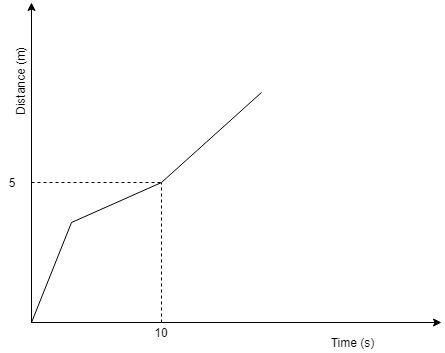This set of Class 11 Physics Chapter 3 Multiple Choice Questions & Answers (MCQs) focuses on “Straight Line Motion – Instantaneous Velocity and Speed”.
1. Which of the following can be used to describe how fast an object is moving along with the direction of motion at a given instant of time?
a) Instantaneous velocity
b) Instantaneous speed
c) Average velocity
d) Average speed
View Answer
Explanation: Instantaneous velocity describes the velocity of an object at a given time instant. Average speed is the speed at which the object travels throughout the time period and not an instant. Speed is a scalar quantity; hence it cannot show the direction of motion.
2. Which of the following is the correct formula for instantaneous velocity?
a) v = dx/dt
b) v = x/t
c) v = xt
d) v = t/x
View Answer
Explanation: The correct formula is v = dx/dt. Instantaneous velocity is the velocity of the object at a given time instant. v = x/t is the formula for average velocity.
3. The trajectory of an object is defined as x = (t-4)2, what is the velocity at t = 5?
a) 2
b) 5
c) 1
d) 4
View Answer
Explanation: The function for velocity can be derived by differentiating the equation with respect to t. v = 2(t-4) is the required function. When t = 5, v = 2(5-4) = 2.
4. A ball is thrown up in the sky, at what position will the instantaneous speed be minimum?
a) Initial position
b) Final position
c) Halfway through the whole trajectory
d) After covering one fourth of the whole trajectory
View Answer
Explanation: When the ball rises up, there will be a point where it will be in the state of instantaneous rest. At the this position the speed of the ball will be 0. Speed is maximum at the initial and final points.
5. A car is moving in a spiral starting from the origin with uniform angular velocity. What can be said about the instantaneous velocity?
a) It increases with time
b) It decreases with time
c) It remains constant
d) It does not depend on time
View Answer
Explanation: This type of motion can be called circular motion with increasing radius. As the radius increases, the tangential velocity increases (v = rw). Now, as there is only one velocity present, the speed will be equal to the magnitude of the tangential velocity.
6. What happen to the instantaneous velocity in a non-uniformly accelerated motion?
a) It increases
b) It decreases
c) It varies as the acceleration
d) It remains constant
View Answer
Explanation: The instantaneous velocity will increase with time. If the motion is accelerated, no matter if the acceleration is constant, or variable, the instantaneous velocity will increase. Variation of acceleration describes how to change in velocity is changing.
7. What is the velocity for a body following the graph below at 10s?

a) 1 m/s
b) 2 m/s
c) 0.5 m/s
d) 0.1 m/s
View Answer
Explanation: At time = 10s, the distance covered is 5m. Velocity = distance/time. Hence, velocity v at 10s = 5/10 = 0.5 m/s.
Sanfoundry Global Education & Learning Series – Physics – Class 11.
To practice all chapters and topics of class 11 Physics, here is complete set of 1000+ Multiple Choice Questions and Answers.
If you find a mistake in question / option / answer, kindly take a screenshot and email to [email protected]
- Practice Class 11 - Mathematics MCQs
- Practice Class 11 - Biology MCQs
- Practice Class 12 - Physics MCQs
- Check Class 11 - Physics Books
- Practice Class 11 - Chemistry MCQs
